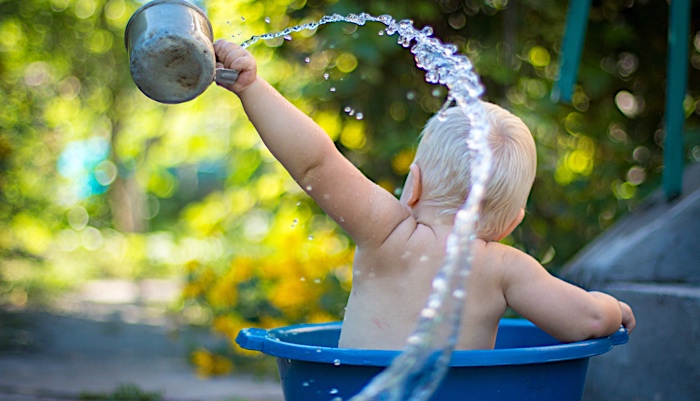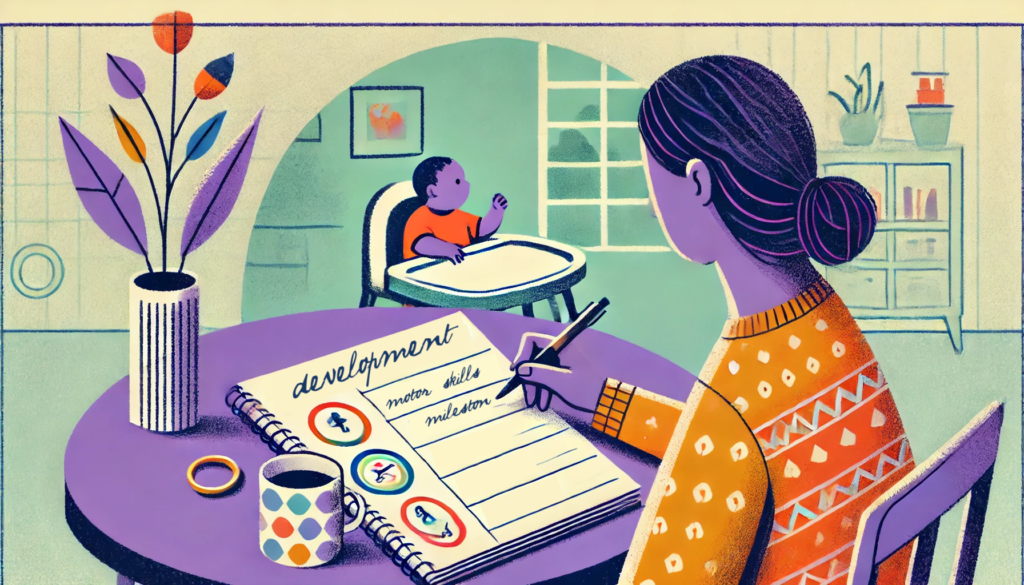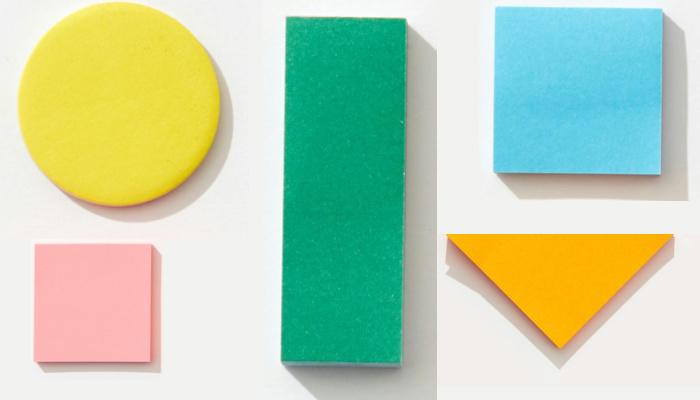Helping Your Blind Baby Develop Through Play: Setting Developmental Goals and Tracking Progress

Every day your baby is getting bigger and older… but is he getting stronger? …is he getting smarter? As the parent of a visually impaired child, I’m sure you worry about your baby’s development, both physically and cognitively. But how can you be sure that you’re doing all that you can? We’ll help you create a Baby Workout Program that will cover all the bases!
Getting Started…
Of course, the first step is to understand your baby’s specific visual loss (as well as any other handicaps) so that you can taylor a program that meets her needs. This means that you’re going to want to read as many books as you can, scan through as many web sites as you can find, and meet with a vision specialist, physical therapist (PT), and ocupational therapist (OT).
If you still need help getting started, check out our Beginner’s Book List.
Don’t Forget the Love!
Next, you’ll want to organize your day so that you have time set aside to work with your baby. However, remember that your baby is a baby first! I can’t emphasize this enough. It’s very important that you work with your baby to help him develop because he needs more attention than the sighted baby, but…
Your Baby Needs Your Love, Too!
Sometimes I find myself just sitting and snuggling my son and I think, “Oh no! We’re not working on a skill! I should get out Ivan’s exercise ball and work on his neck muscles!” But then I catch myself and realize that we are working on a skill! Spending quality time with your baby teaches him that you love him, that he’s safe, that the world is a happy, loving place. These are very important concepts that he can only learn from you!
With that said, let me show you how I’ve organized our Play
time…
Play Time!
 Begin by writing a list of goals for your child followed by ways those goals can be met (take this list to your vision specialist or PT/OT so they can help you fill in any gaps). Be sure to make these goals as fun as possible – think in terms of games rather than work.
Begin by writing a list of goals for your child followed by ways those goals can be met (take this list to your vision specialist or PT/OT so they can help you fill in any gaps). Be sure to make these goals as fun as possible – think in terms of games rather than work.
Next, try to find a couple of hours a day to work on these skills – after breakfast and before our morning nap works well for us. So does one hour in the afternoon, usually after lunch. Having scheduled time will help you remember to work on these skills every day without over doing it and tiring out your baby!
Write a chart, organized by goals and skills, to pin up somewhere in your home. This way you will see your goals and be reminded of different games you can play with your baby. Here’s Ivan’s chart:
Ivan’s Goals — 6 Months
| Physical |
|---|
| Goals | Games |
|---|---|
| head control | sit up on couch, play in walker, play with capsule |
| balance | play horse, sit up while supported by arms |
| strength | joint compression, super baby |
| push up off floor | play tummy time, play on wedge, lay across lap |
| roll over from tummy to back | play baby rollover, reach for rattle |
| roll over from back to tummy | play baby rollover, reach for rattle |
| improve fine motor skills | play with small toys (like a block) |
| improve arm strength | play high-five |
| Cognitive |
|---|
| Goals | Games |
|---|---|
| reach for objects he’s felt/remember their presence | sensory play area, play mat |
| reach for objects he hears | play with duck-a-duck & other toys that make sound |
| shake rattle himself | play with rattle |
| learn cause & effect | play with water mat, instruments |
| learn to interact with people | take him out on a walk to the park, take him to grandma’s house for Sunday family dinner |
| body awareness | name body parts in bath, naked baby time, baby massage |
| spatial awareness | walker, rock in hammock |
| learn about environment/be curious about world | go outside, play in the sun or rain, go for walk, touch new things (like grass, sand, water, frozen teethers, etc), eat new foods, play with musical instruments |
| Visual |
|---|
| Goals | Games |
|---|---|
| figure out what vision he may have/get him to use his limited vision | dark mat with light objects, play with lighted toys |
| encourage photo receptors | try to track flashlight |
Click here for a Blank Goals Chart you can fill in yourself. If you have any questions about any of Ivan’s goals above, just send me an email.
Remember…
Revise your chart every month or two, adding new goals and removing ones you’ve accomplished. Keep these goal charts in a file. You’ll be amazed at the progress you’ve made when you look back at old charts!

Related Posts

Braille and Literacy, Toys, Visual Impairment
24 Braille Toys for Kids Who are Blind
Everything from alphabet blocks to raised line coloring pages and activity books to puzzles to card and board games... and so much more! And it's all in braille ready for...

Development, Special Needs
How to Track Milestones for Developmentally Delayed Babies
Parents of developmentally delayed babies can explore practical tools and strategies to track milestones, celebrate progress, and support their child’s unique developmental journey.

Tactile Arts and Crafts, Visual Impairment
Using Origami to Teach Blind and Low-Vision Students Basic Shapes
If, like me, you have wondered why it is important for young students to learn about shapes, here are just a few reasons. Teaching shapes in early education provides children...